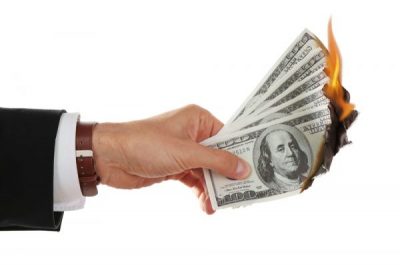America’s “Corona 2020 Great Depression”: US Federal Budget Deficit Hits $3.1 Trillion
The coronavirus pandemic has contributed to the tripling of the US budget deficit in just one year.

On March 11, the governments of 193 member states were ordered to close down their national economies as a means to combating V-The Virus.
Corporate bankruptcies, mass unemployment and poverty: The closure of the planet’s real economy has triggered a global debt crisis affecting all sectors of economic activity.
In country after country, tax revenues have collapsed, the public debt has gone fly high.
The real economy Worldwide is in a state of shambles. According to the OECD (July 15 report) “45% of US businesses experienced disruptions in supply chains; 25% of businesses have less than 1-2 months cash reserves.“ (OECD).
According to a survey of over 5 800 small businesses in the United States: ” … 43% of responding businesses are already temporarily closed. On average, businesses reduced their employees by 40%. Three-quarters of respondents indicate they have two months or less in cash in reserve. … (OECD)
These estimates were based on April-June figures.
In June, the possibility of a Covid-19 “Second Wave” was announced. In course of the last three months, the fate of the real economy Worldwide in country after country has been marked by a renewed string of bankruptcies (large corporations and Small and Medium Sized enterprises).
The Concentration of Money Wealth
While the real economy is in shambles, the concentration of money wealth has increased. The combined wealth of U.S. billionaires has increased by $850 billion since March 18th, 2020, an increase of over 28 percent. (See IPS study).
Those who have enriched themselves in the course of the corona crisis have generously offered to help. They are the global creditors.
In September, The US GDP was of the order of $19.54 trillion, the US National Debt was of the order of $26.71 trillion.
The financial establishment including America’s billionaires are the creditors of real economy capitalism, including the State apparatus which is slated to be privatized.
Under the “new normal”, the entire State structure will be under the control of powerful creditor institution. What is envisaged is The Great Reset: a so-called public-private partnership under the auspices of the World Economic Forum (WEF).
The US Budget Deficit and the Public Debt
The US federal budget deficit has hit an all-time high of $3.1 trillion in the 2020 budget year (September), “more than double the previous record, as the coronavirus pandemic shrank revenues and sent spending soaring”:
“…the deficit for the budget year that ended on September 30 was three times the size of last year’s deficit of $984bn. It was also $2 trillion higher than the administration had estimated in February, before the pandemic hit”
It was the US government’s largest annual shortfall in dollar terms, surpassing the previous record of $1.4 trillion set in 2009. At that time, the administration of President Barack Obama was spending heavily to shore up the nation’s banking system and limit the economic damage from the 2008 financial crisis.
The 2020 deficit, in terms of its relationship to the economy, represented 15.2 percent of total gross domestic product (GDP), the sum of all the goods and services produced by the country. That was the highest level since 1945, when the US was borrowing heavily to finance World War II.
The administration’s final accounting of the 2020 budget year shows that revenues fell by 1.2 percent to $3.42 trillion, while government spending surged 47.3 percent to $6.55 trillion. That spending reflects the relief programmes Congress passed in the spring to support the economy as millions of Americans were losing their jobs. Al Jazeera
*
Note to readers: please click the share buttons above or below. Forward this article to your email lists. Crosspost on your blog site, internet forums. etc.
Featured image is from Shutterstock


